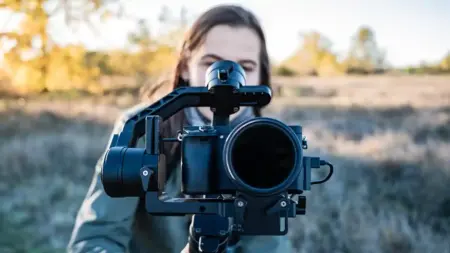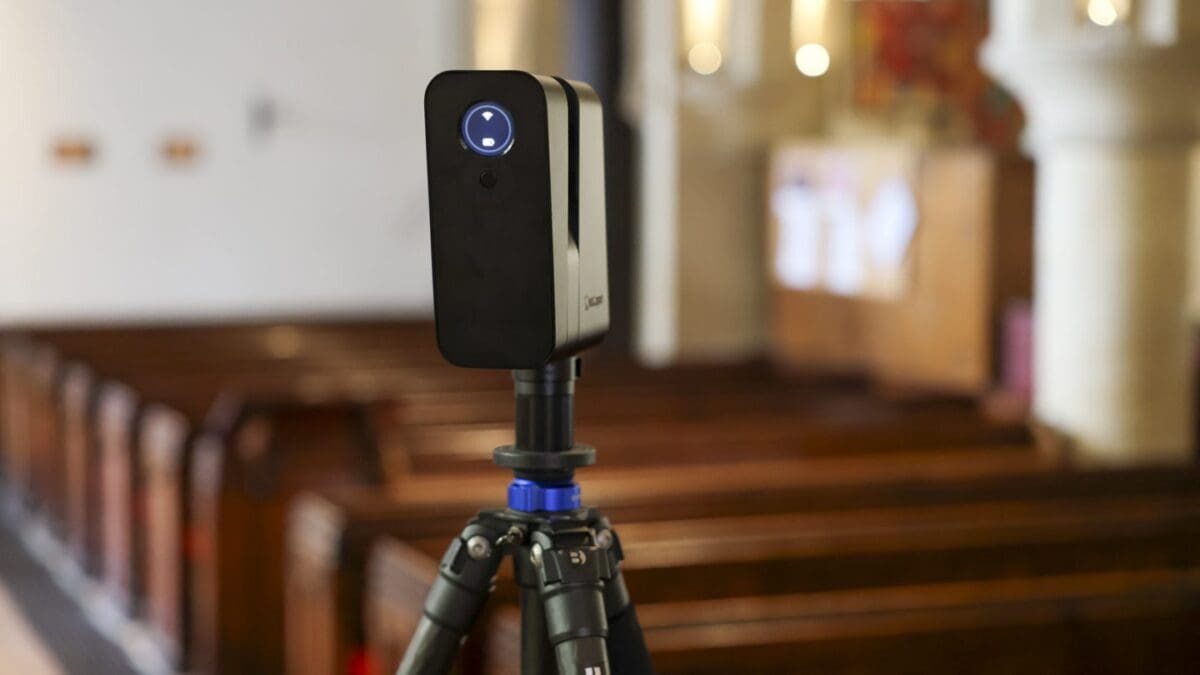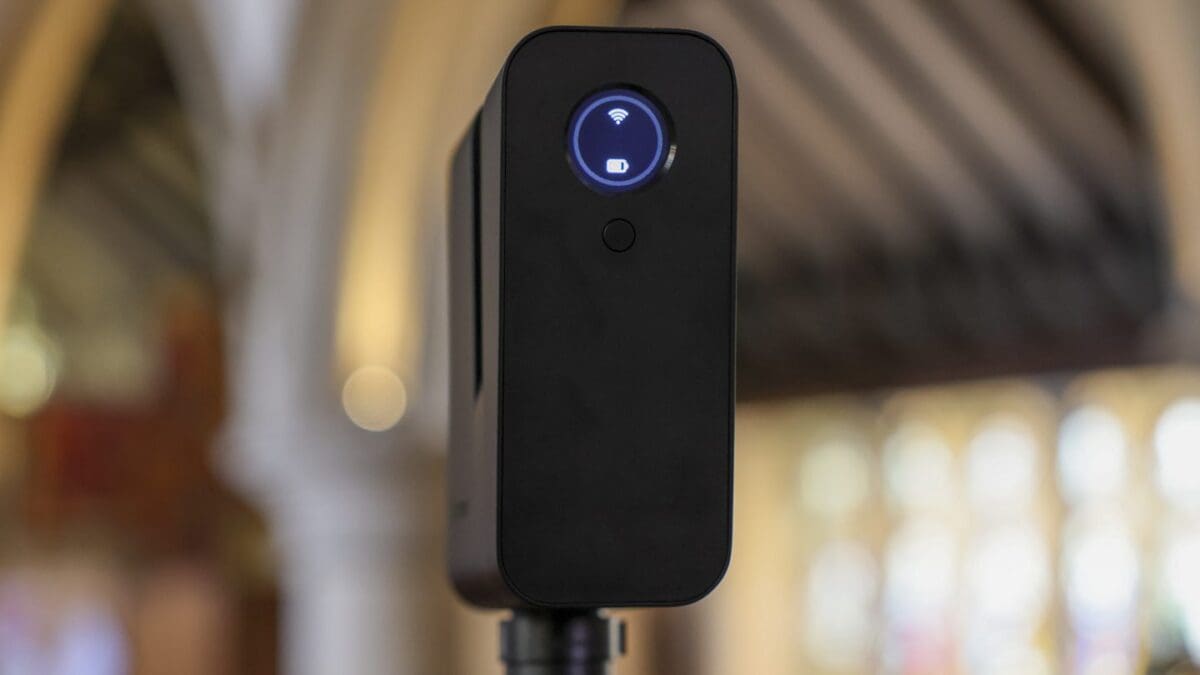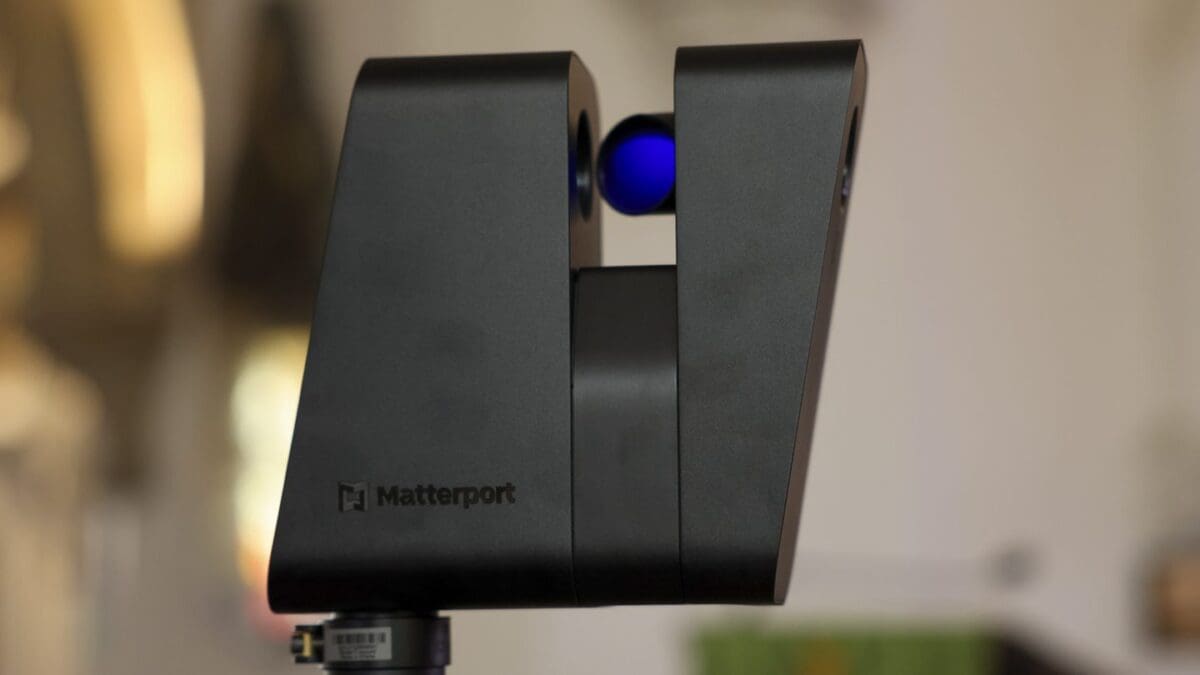Considering the price and what this camera does, the Matterport Pro3 arrives in a relatively small and simple box. The size gets smaller as you open the box up to reveal a battery, charger, tripod attachment and a small semi-hard case containing the Matterport Pro3 and that’s it.
This first introduction to the Matterport Pro3 essentially sums up how well-tuned the designers are to their hardware, user requirements, and functions. It’s all incredibly simple and neat. The whole thing fits comfortably inside a standard backpack with the instant feeling that anyone can use the Matterport Pro3; no experience is needed; just set up and go. Testament to this is the number of users from non-imaging backgrounds shown on the Matterport website, galleries or museums, architectural buildings, educational facilities and hotels.
Alongside the Matterport Pro3, the only other pieces of equipment that you need are a tripod with the head removed and a Smartphone, iOS or Android, as the App works equally well with either. While the Smartphone type doesn’t matter, the amount of free space does, so ensure that there are a good few GB of space ready to download and store the files captured by Matterport Pro3 as it runs through its processes.

The Matterport Pro3 itself consists of three parts, the battery that slots into the base of the unit and is charged by a separate USB charger that is also supplied. Then the quick-release tripod mount that clips into the base of the Matterport. This is a metal attachment with a 3/8-inch thread at the base that screws directly into the top thread of a standard tripod. In this test, I tried and used a Benro Mach 3, Manfrotto 055 and 3LT Winston 2.0, all good solid tripods that make ideal basis once their heads are removed.
The Matterport Pro3 camera is quirky-looking, as you’ll see in the pictures. On the front is the large lens that captures the images, then in the middle is the LiDAR Mirror, which is the clever bit; on the back is the power button and small screen, and on the base is the socket for the quick tripod release. As the camera goes, this is all extremely minimalistic as all of the main controls go through the smartphone app rather than the hardware itself.
The build is all very solid and weighty, with the simple lines of the camera’s exterior looking otherworldly. Aside from the lens, there is little else about the exterior that gives away its function or features unless you know exactly what it is.
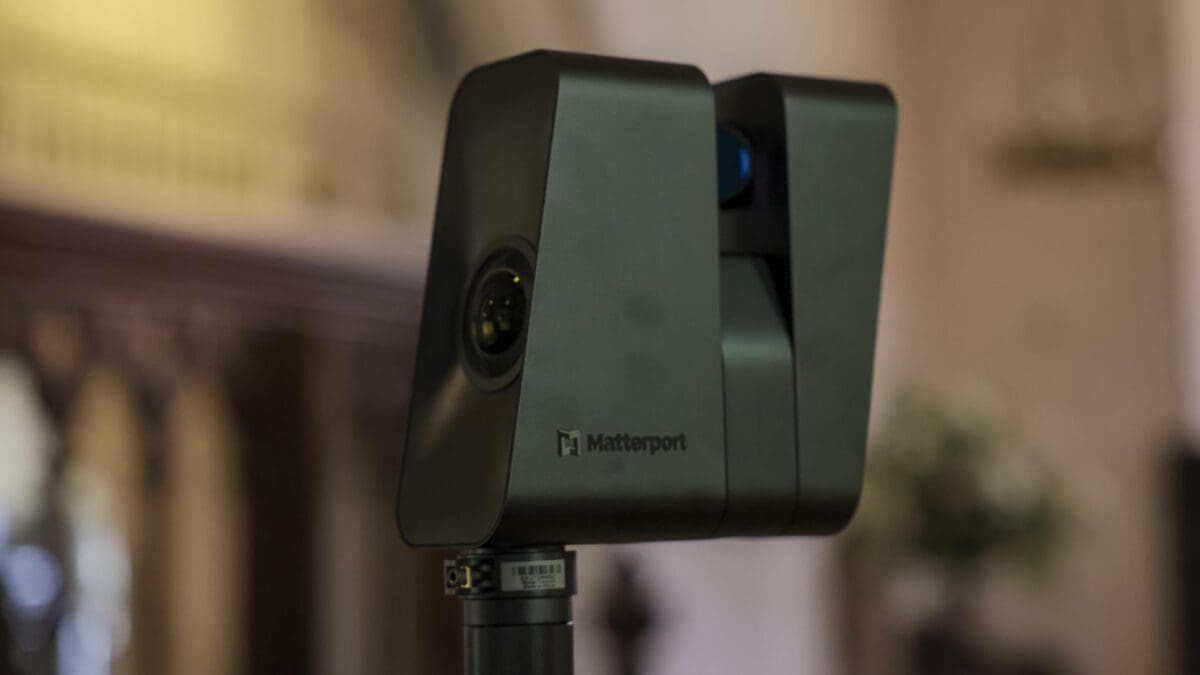
The whole look of the camera and the supporting App quickly starts to build a picture of who it is aimed at. While photographers will find the Matterport a lot of fun, albeit expensive, the true market is real estate, building, commercial, architectural and archaeological; there are probably plenty of other professionals that would also find this camera extremely useful. The Matterport Pro3 has been designed to do a job beyond just capturing images in a traditional 2D sense; it utilises a LiDAR sensor to create a 3D mesh of its surroundings.
The LiDAR sensor is the clever bit in the middle; essentially, it beams out a laser and measures the amount of time it takes for the reflected light to return to the sensor. The beam determines the distance, and a 3D mesh can be built.
This LiDAR sensor enables the ability to create immersive, photorealistic representations of areas that would be impossible with a camera alone. For architects and real estate, Matterport gives the ability to create full immersive representations of buildings to a degree that would not have been possible before without being on location or by commissioning expensive 3D modelling.
To capture the image, the Matterport Pro3 is mounted on a tripod five feet from the ground, then the shutter button is in the App is pressed, and the camera starts the scanning process. The camera rotates through the full 360º to capture everything around it, inside or out.
Once the information from the 3D mesh and the images are put together, you have a textured 3D model that can then be navigated in the virtual space.
With a few clicks in the App, you can create a doll house view of the area or a floor plan or 3D model that can then be opened and finetuned in another application.





